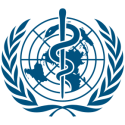Migration of Health Workers: The WHO Code of Practice and the Global Economic Crisis
This edited volume from the World Health Organization (WHO), which includes chapters written by MPI researchers, examines country-level responses to the international movement of health-care workers, both before and after adoption of the WHO’s Global Code of Practice on the International Recruitment of Health Personnel. The publication provides evidence of the complexities underlying this migration and the policy measures taken to manage it in each of the 13 country case studies: Australia, Belgium, Canada, El Salvador, Italy, the Netherlands, Norway, the Philippines, Poland, Romania, Switzerland, the United Kingdom, and the United States. The volume also serves as a progress report on implementation of the Code itself, adopted in 2010 by all 193 WHO Member States; the Code aims to foster international cooperation on issues surrounding health-care worker migration while providing a framework for tackling the worldwide shortage of health-care workers.
The book includes contributions from MPI CEO and Director of Studies Michael Fix as well as MPI Senior Policy Analysts Jeanne Batalova and Madeleine Sumption.
In Chapter 8: Immigration and the health-care workforce since the global economic crisis: Overview, Michael Fix and Madeleine Sumption provide an overview of recent migration patterns, health-care workforce trends, and economic conditions in the four Organization for Economic Cooperation and Development (OECD) countries that are home to the majority of internationally mobile doctors and nurses: Australia, Canada, the United Kingdom, and the United States. The authors also compare the effects of the economic crisis on immigration in these countries and point out the connections between immigration policy and utilization of professional skills, particularly those related to health care.
In Chapter 11: Immigration and the health-care workforce in the United Kingdom since the global economic crisis, Madeleine Sumption and Ruth Young examine the impacts of the economic crisis on health-care workers in the United Kingdom, noting that although the number of health-care professionals arriving in the United Kingdom on work visas has sharply decreased since the mid-2000s, the crisis itself has had a weaker effect on this sector than on others. However, while immigrant health-care workers fared relatively well throughout the crisis and its immediate aftermath, they are susceptible in the future to tightening fiscal policies that will slow the growth of the National Health System budget.
In Chapter 12: Immigration and the health workforce since the mid-2000s in the United States, Jeanne Batalova offers a profile of immigrant health-care workers in the United States, primarily focusing on doctors and nurses in the 2007-09 recession. The author also examines the visa options, both temporary and permanent, available to health-care professionals, as well as the barriers many immigrant health-care workers must face before they can practice in the country.
Forward
Dr. Marie-Paule Kieny
Preface
Introduction
Chapter 1: Assessing global progress in implementing the WHO Global Code of Practice on the International Recruitment of Health Personnel
Amani Siyam and Mario Roberto Dal Poz
Chapter 2: Civil society’s contribution and advocacy for implementing the WHO Global Code in the European Region: Six country case studies
Linda Mans, Remco Van de Pas, and Giulia de Ponte
Chapter 3: Challenges and hindrances in the application of the Code from a legal perspective: The case of El Salvador
Maria Angela Elias Marroquin and Javier Rivas
Chapter 4: Monitoring the Code: The Philippines’ multi-stakeholder approach
Christine Joan R. Co and Kenneth G. Ronquillo
Chapter 5: Health personnel challenges in Norway
Otto Christian Rø
Chapter 6: Swiss commitment to implementing the Code
Delphine Sordat Fornerod
Chapter 7: Monitoring trends in international migration of health personnel: A critical review of existing data sources
Jean-Christophe Dumont, Gaetan Lafortune, and Pascal Zurn
Chapter 8: Immigration and the health-care workforce since the global economic crisis: Overview
Madeleine Sumption and Michael Fix
Chapter 9: WHO four-country study: Health workforce migration in Australia
Lesleyanne Hawthorne
Chapter 10: Immigration and the health-care workforce in Canada since the global economic crisis
Yaw Owusu and Arthur Sweetman
Chapter 11: Immigration and the health-care workforce in the United Kingdom since the global economic crisis
Madeleine Sumption and Ruth Young
Chapter 12: Immigration and the health workforce since the mid-2000s in the United States
Jeanne Batalova
Conclusions
Amani Siyam, Mario Roberto Dal Poz, and Thomson Prentice





